Hello! I’m here, yet again, to chat about buttercream, will it ever stop? Probably not. In this instalment we’re going to chat all about syrup-based buttercreams, how to make them and how to incorporate different flavours including base recipes that are easily customisable. I’ve already covered Swiss meringue buttercream in this post and a general breakdown of all of the different types of buttercream on this post over on Kitchen Projects. And, if you’re not a fan of buttercream, I also have a huge cream cheese icing deep dive which you can read here.
So, what do I mean when I talk about syrup-based buttercreams?
When I’m talking about syrup-based buttercreams, I’m talking about buttercreams which involve making a sugar syrup, boiling it until it reaches “soft ball” (around 118°C/244°F) before pouring the hot syrup over whisking eggs. The hot syrup cooks the eggs and stabilises them meaning that as they whisk they can trap more air and are less likely to collapse. Butter is then added and whisked in until you have a lovely silky buttercream!
Ratios & Syrup Variations
Similarly to Swiss meringue buttercream, the ratios are fairly customisable, you can add a little here and take away a little there until you find a buttercream that suits your personal preference. I always start off with a basic ratio of:
1 part egg
2 parts sugar
3 parts butter
The thing that I usually mess around with when it comes to syrup-based buttercreams is the sugar. One of the main reasons that I love syrup-based buttercreams is that they give you the opportunity to switch out the sugars without affecting the texture or overall sweetness of the final buttercream. You can replace the sugar or a portion of the sugar with syrups or liquid sugars such as honey, maple syrup or even cordial. As the syrup is boiled to 118°C any excess water is evaporated meaning that it won’t affect the texture of our finished buttercream.
However, we have to account for different sugar levels in these syrups. To do this I look at the sugar content in whatever syrup I’m using, let’s use maple syrup as our example. The sugar content per 100g is 58.59g (this can be found on the nutritional information), we’ll round this up to 60g. So, if we wanted the equivalent of 100g of sugar in maple syrup we would have to do the following calculation:
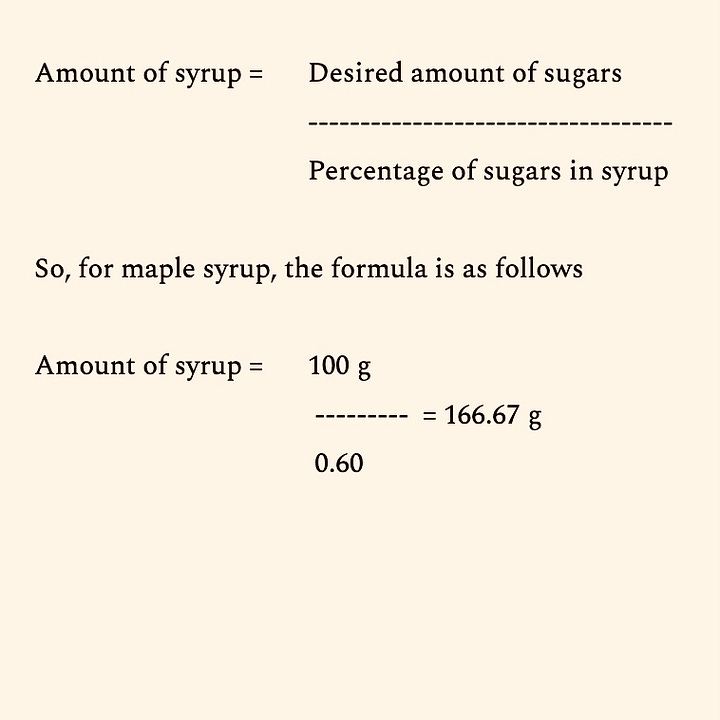
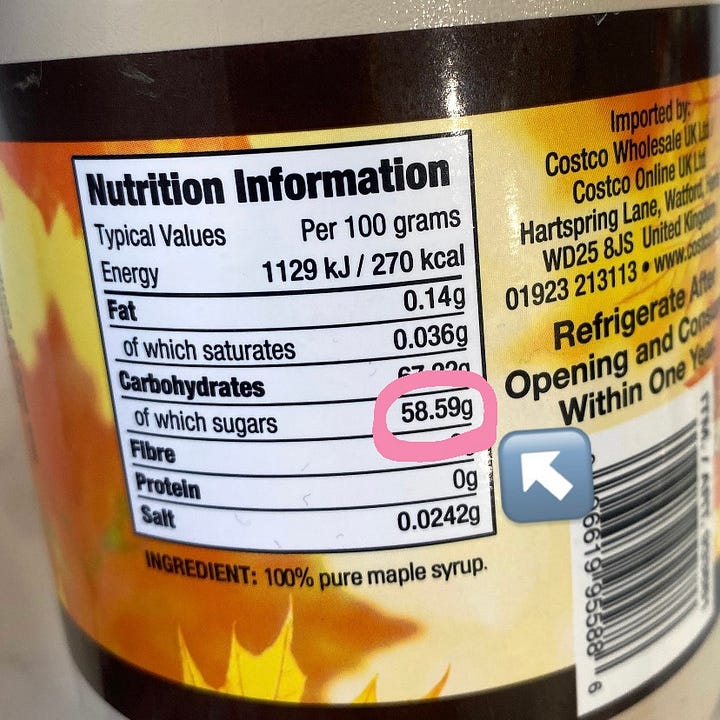
This formula can be applied to any syrup including cordials, honey, golden syrup etc, you just have to be aware that the burning point of some syrups is lower than others so watch out for that!
This week I’m using this method to make elderflower buttercream as a filling for my Strawberry & Elderflower Angel Slice, this recipe is exclusively available for paid subscribers, so if that sounds like something you’re into, please consider becoming a paid subscriber. You’ll receive an exclusive recipe every week, plus access to the full archive of over 100 thoroughly tested cake and dessert recipes. And you'll be helping support me so I can continue creating and sharing recipes! 🩷
It’s just £6 a month or £60 for a whole year. To subscribe or upgrade, just hit the button below and join me for more cakey fun.
Another way that we can add flavour is by making a caramel syrup by caramelising the full amount of sugar needed for the buttercream, adding a small amount of water to turn it into a syrup and then boiling that syrup to 118°C (244°F). I use this method for my Chocolate & Hazelnut Slab and the maple method for my Maple Pecan Esterházy.
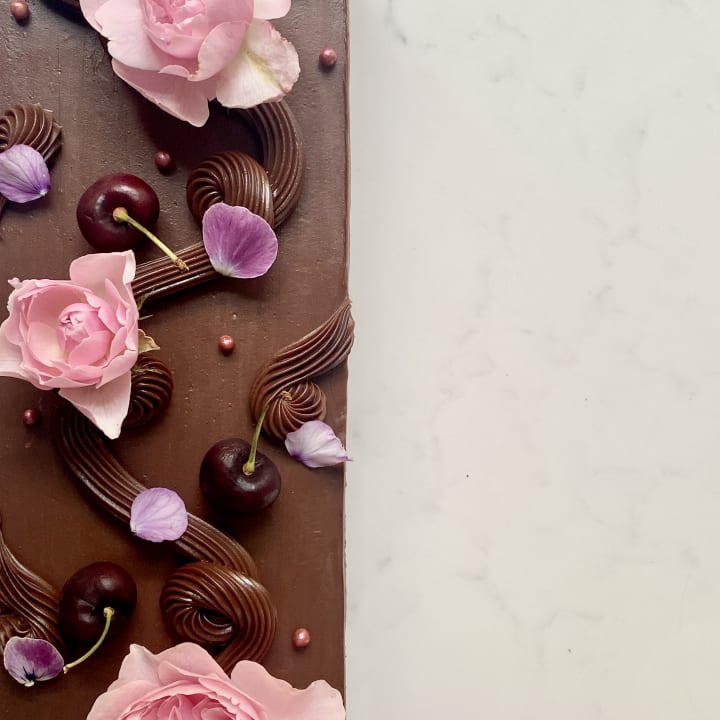
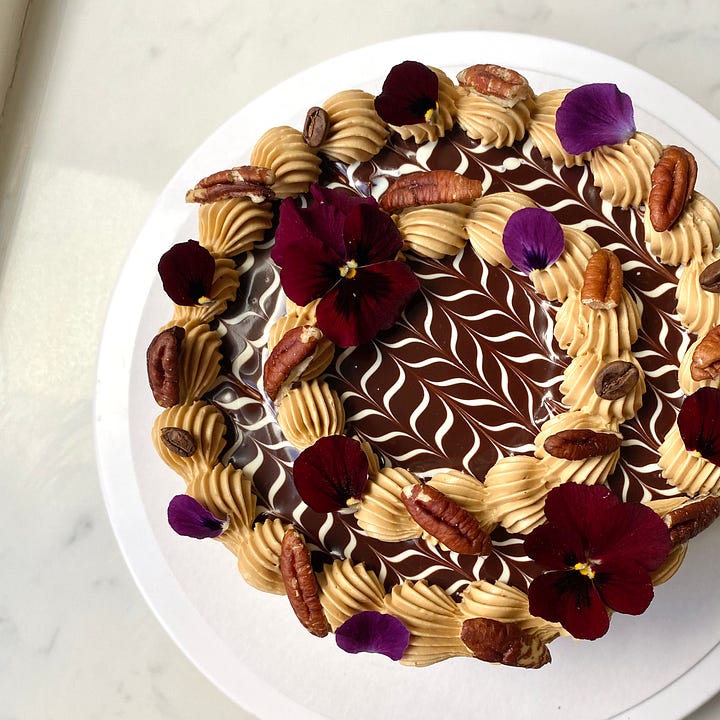
Even though the method and the ratios I’m using for these buttercreams are the same, the egg dramatically changes the finished product and will determine the type of buttercream so let’s have a look at the different types…
Italian Meringue Buttercream
This is the most common of the syrup-based buttercreams, it uses egg whites which are whisked, hot syrup is then poured over giving us a firm Italian meringue. Butter is added to this mixture to give us Italian meringue buttercream. It’s is very similar to Swiss meringue buttercream in terms of flavour and texture, it’s very fluffy, stable, easy to work with and has a nice “clean” and neutral flavour, perfect for pairing with fruits or milder flavours. Some people think that Italian meringue buttercream is slightly more fluffy, however I find the difference between Italian and Swiss to be negligible so just go for whichever you prefer!
When To Use It
When to use it really depends on personal preference, if you’re looking for a plain or vanilla flavoured buttercream Italian is a good option, it’s nice and stable, lovely and silky and not too sweet, however, I tend to opt for Swiss meringue in these cases for the sole reason than it creates less washing up.
When Italian meringue buttercream really comes into its own is when you want to incorporate different syrup-based sugars like maple syrup, honey or golden syrup or caramelised sugar. I use syrups to flavour Italian meringue buttercream in my Parsnip, Honey & Brown Butter Cake as well as in my Elderflower & Strawberry Angel Slices.

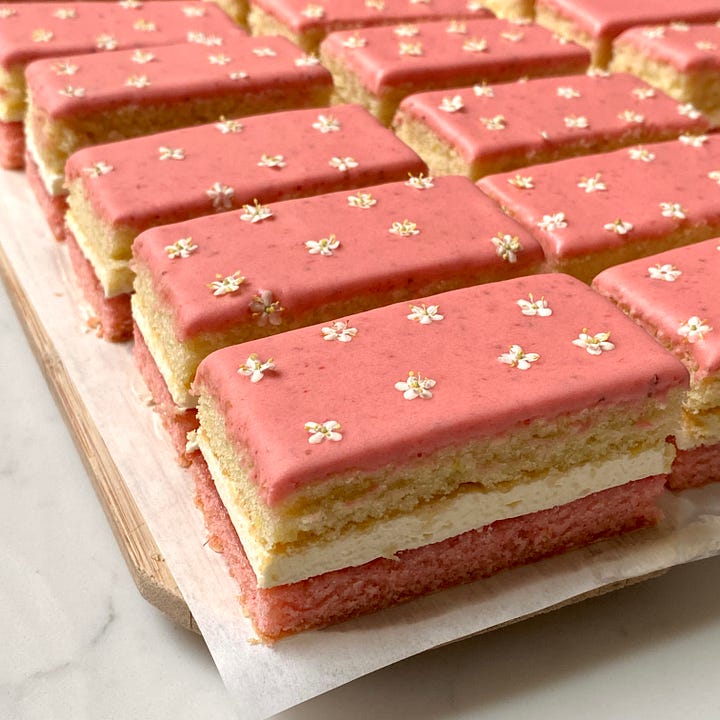
Italian Meringue Buttercream
Ingredients
150g egg white (about 5 whites)*
80ml water
300g caster sugar
450g soft, unsalted butter
Pinch of salt
Method
Place the egg whites in the bowl of a stand mixer with the whisk attachment, make sure the bowl is clean and dry!
Place the sugar and water in a medium sized pan (make sure it’s a pan that you can pour out of easily), mix so that you don’t have any lumps of dry sugar and bring to the boil on a high heat.
When the syrup reaches 115°C (240°F), start to whisk the egg whites on high so that they start to foam.
Continue to boil until the syrup reaches 118°C (244°F).
When it reaches 118°C (244°F), remove it from the heat and carefully pour into the egg whites as they continue to whisk, pour the hot syrup down the side of the bowl rather than into the centre to avoid any splattering.
You now have Italian meringue, whisk until stiff peaks have formed and the mixture is cool to the touch.
Add in the soft butter and whisk until all of the butter is incorporated and the buttercream is light and fluffy.


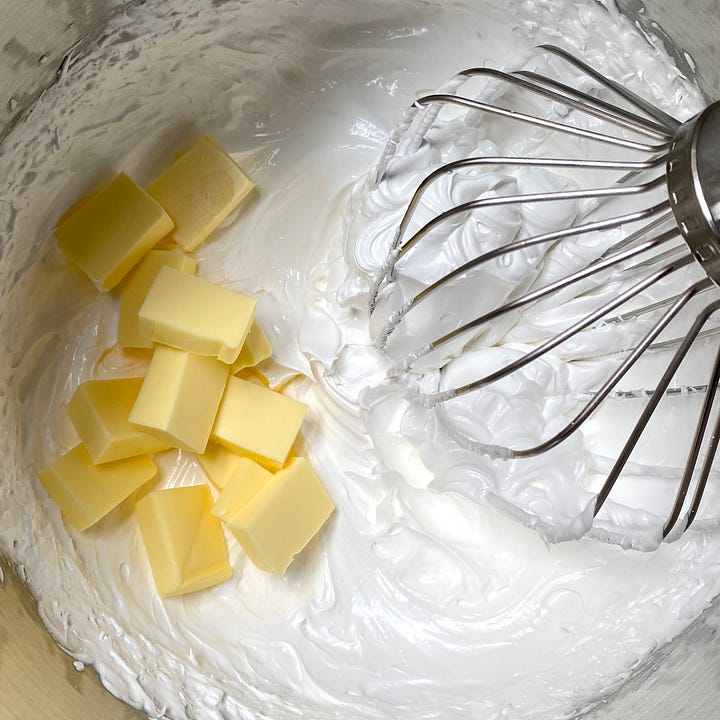
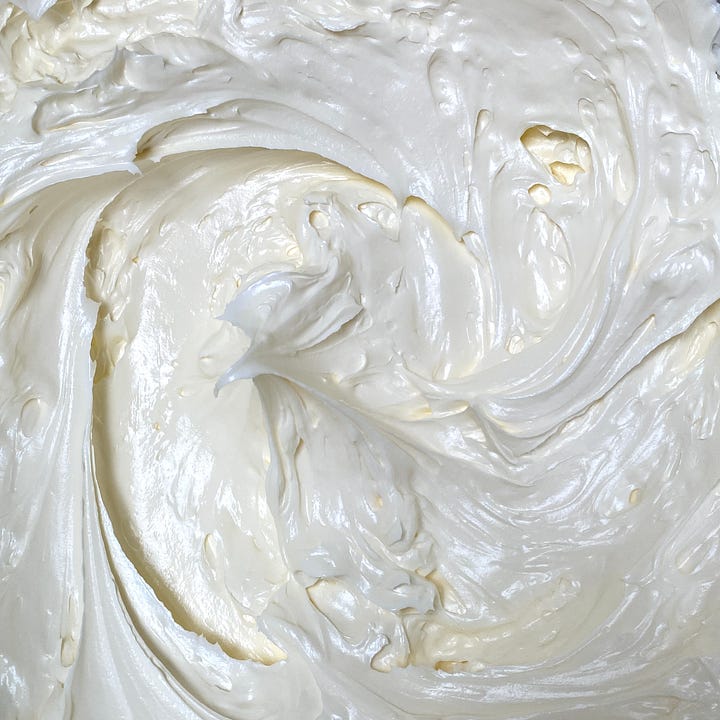
*A note on pasturised eggs:
During my many years as a pastry chef I’d never had a problem with pasteurised egg whites, I’d seen other people talk about them and about how they wouldn’t whip but I’d never found this to be the case… until now.
This week I’ve been on the struggle bus with pasteurised egg whites and in the end I gave up on them altogether. What I’ve learnt from this is that it really just depends on the brand of your egg whites and wether or not you trust them, if you’re new to buttercreams, I’d use fresh just to be safe.
French Buttercream
French buttercream is made with egg yolks which give it a lovely rich, custardy flavour and super silky texture. It’s less stable and can have a tendency to collapse in warm temperatures but is very delicious and definitely worth making!
*Note: You can make French buttercream over a bain-marie in the same way as Swiss, my preference is to use the syrup method which is why I’ve included it here.
When To Use It
I use French buttercream when I want an incredibly rich and decadent cake, or, if i just have loads of egg yolks to use up! If you’re using it for a tall cake or the cake needs to sit at room temperature for a while, I’d advise using French buttercream on the inside of the cake and something more stable for the outside, for example ganache or Swiss meringue buttercream. I’d never use french buttercream for the outside of a tiered cake.
I like to pair it with rich chocolatey or nutty flavours. It works well with vanilla, rum, caramel, chocolate and nuts. I use variations of French buttercream in the following bakes: Crème Brûlée Layer Cake, Maple Pecan Esterházy, Chocolate Cake With Soy Caramel Buttercream (KP), Banana Rum & Caramel Cake
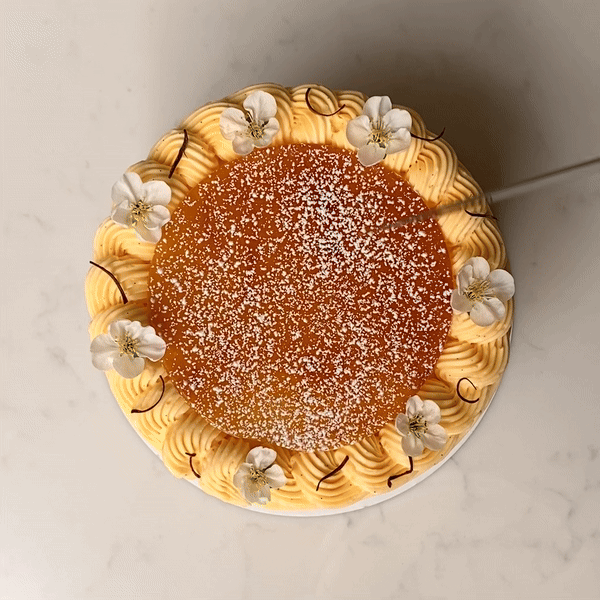
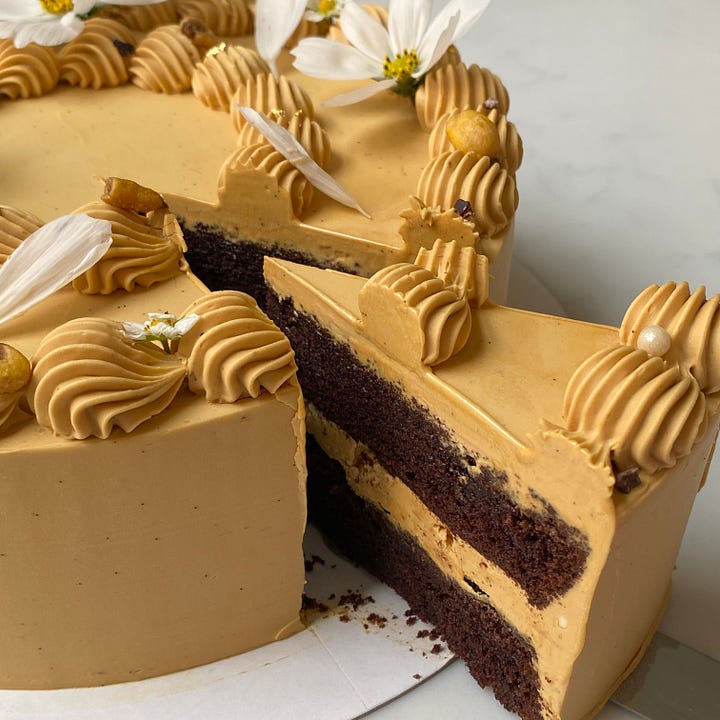
French Buttercream
Ingredients
150g egg yolks (about 10 medium yolks)
80ml water
300g caster sugar
450g soft, unsalted butter
Pinch of salt
Method
In a clean bowl, whisk the egg yolks on high until very pale and fluffy and at ribbon stage.
While the yolks are whisking, place the sugar and water in a medium sized pan (make sure it’s a pan that you can pour out of easily), mix so that you don’t have any lumps of dry sugar and bring to the boil on a high heat.
Continue to boil until the syrup reaches 118°C (244°F).
When it reaches 118°C (244°F), remove it from the heat and carefully pour into the egg yolks as they continue to whisk, pour the hot syrup down the side of the bowl rather than into the centre to avoid any splattering.
When the syrup is added to the yolk mixture, it can have a tendency to collapse, just keep whisking and it should get fluffy again!
Continue to whisk until it’s at ribbon stage and the mixture is cool to the touch.
Once cool, start to add the room temperature butter a lump at a time, don’t worry if it splits, just keep on whisking. When all of the butter has been added, whisk until there are no lumps and you have a smooth, soft buttercream. It will be looser than Italian, don’t worry! If it’s very soft, chill it in the fridge before re-whisking and using.
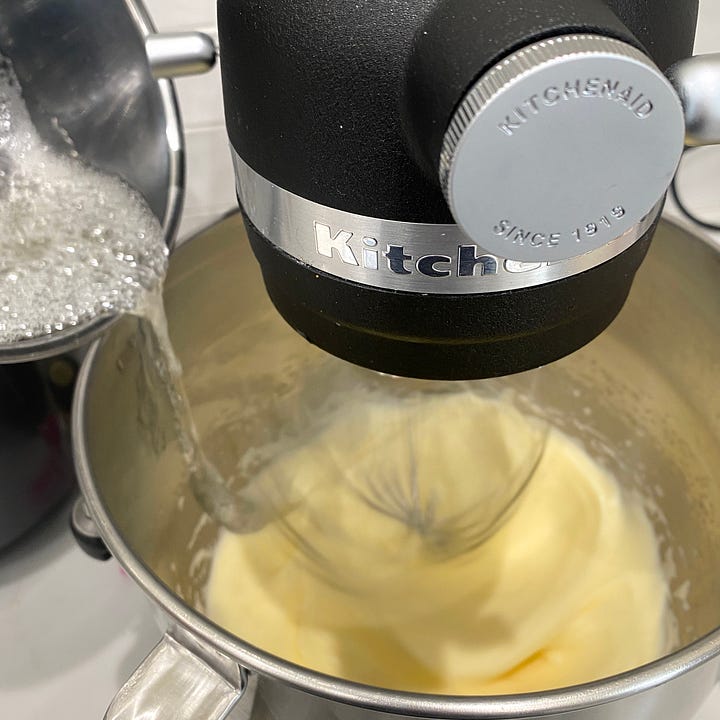

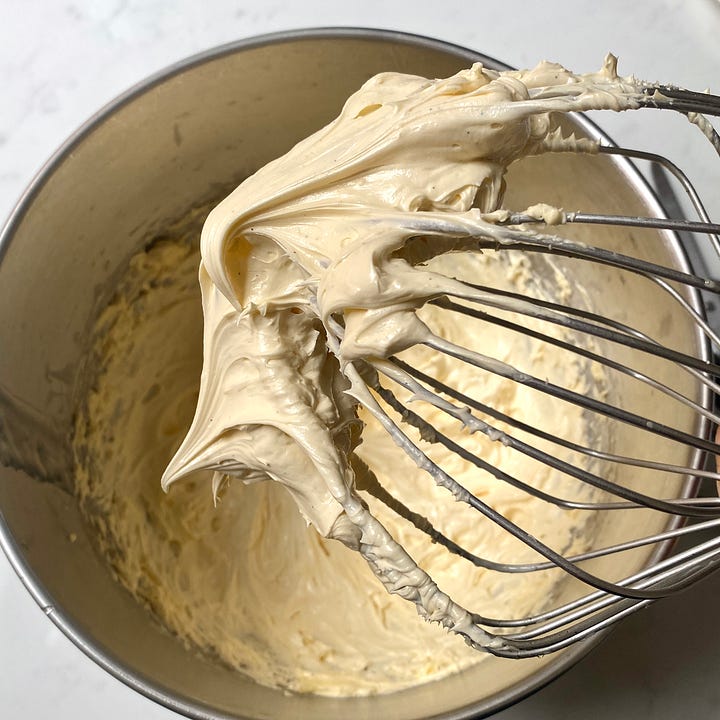
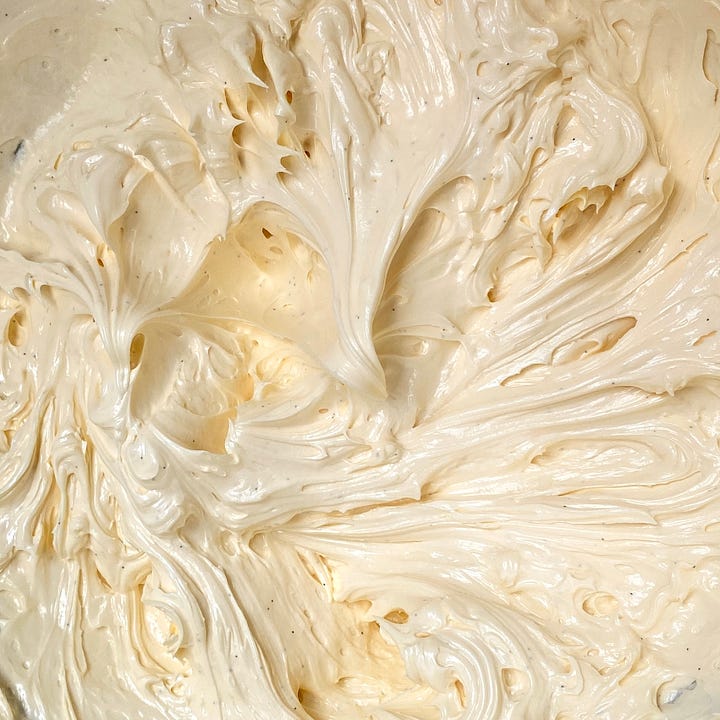
Whole Egg Buttercream
Whole egg is the least is a lesser-known buttercream and it’s no wonder when it has such a dull and unappealing name. I can understand why it’s less popular than Italian and French; it doesn’t have the light fluffiness of Italian nor the rich custardiness of French. However, what is does have is the huge advantage of not having to mess around dividing yolks and whites.
*Note: You can make whole egg buttercream over a bain-marie in the same way as Swiss, I use both methods which is why I’ve included it here.
When To Use It
Whole egg buttercream is perfect if you don’t want to faff around separating your eggs, however in terms of flavour and texture, it isn’t very distinctive and there isn’t a whole lot going on. This makes it ideal for adding flavours, it works especially well when paired with chocolate, pralines and nut pastes. You can also make a whole egg/French buttercream hybrid by using half yolks and half whole eggs, this is handy if you don’t have quite enough yolks for French. As with French, it’s less stable so I would avoid using it for tall cakes. I use whole egg buttercream for my Chocolate & Hazelnut Slab Cake.
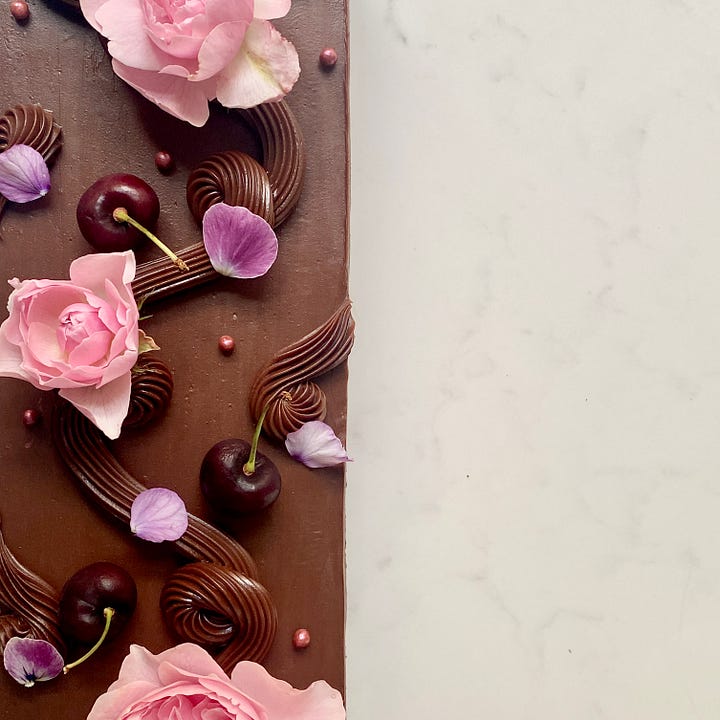

Ingredients
150g eggs (about 3 medium eggs)
80ml water
300g caster sugar
450g soft, unsalted butter
Pinch of salt
Method - Exactly the same as French, see above.
Troubleshooting
In order to avoid repeating myself too much, I’m going to refer you to the Swiss Meringue Buttercream Post as all of the troubleshooting in that post is also relevant to syrup-based buttercreams. However there are a few syrup specific things that we need to touch on:
Crystallised sugar syrup - Unfortunately there isn’t a lot you can do if your sugar crystallises, the best way you can avoid this is just to leave it alone! Don’t stir it, don’t fiddle with it, just let it do it’s thing. If your sugar does crystallise, pour it out onto a piece of baking paper, dry it out in the oven on a low temperature and use it for something else.
Eggs collapsing after adding the hot syrup - I find that this tends to be a problem when it comes to French and whole egg rather than Italian. It’s really important to make sure that your eggs are whisked enough before adding the syrup, they must be at ribbon stage at least! If they do collapse after the syrup has been added, don’t worry, just keep on whisking, they should get fluffy again. If they don’t you can either bin the eggs or risk adding the butter anyway, if I’m making a buttercream that I don’t mind being on the denser side like a chocolate buttercream, I’d probably go ahead and risk adding the butter rather than wasting the eggs and sugar.
Sugar syrup forming a lumps as you pour it - This can happen if you add your sugar syrup into your eggs too fast, or if your whisk isn’t moving fast enough. Unfortunately if this happens and your syrup splatters everywhere or forms a huge lump, there isn’t anything you can do and you’ll have to bin it and start again.
Whew that was a big old buttercream chat, congratulations if you made it this far! I think that’s it for now but please don’t hesitate to reach out if you have any questions!
Guys, trying to figure out these formulas had me stressed, I’m not a maths girl! So if you enjoyed this post or found it useful and want to support me please like, comment or share! It really helps my newsletter to grow so that I can continue to create and share free content without relying on paid ads. Thank you so much!🩷




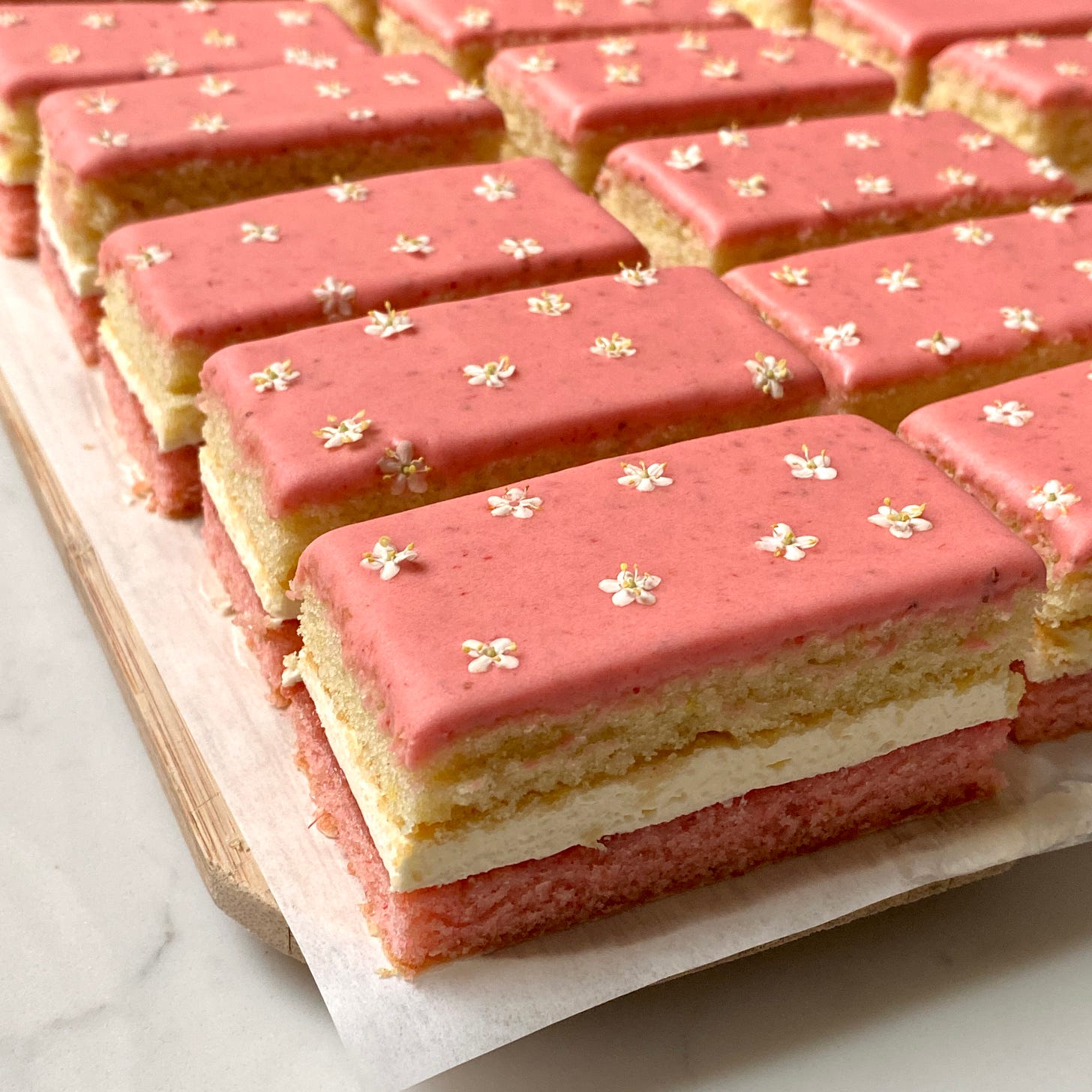
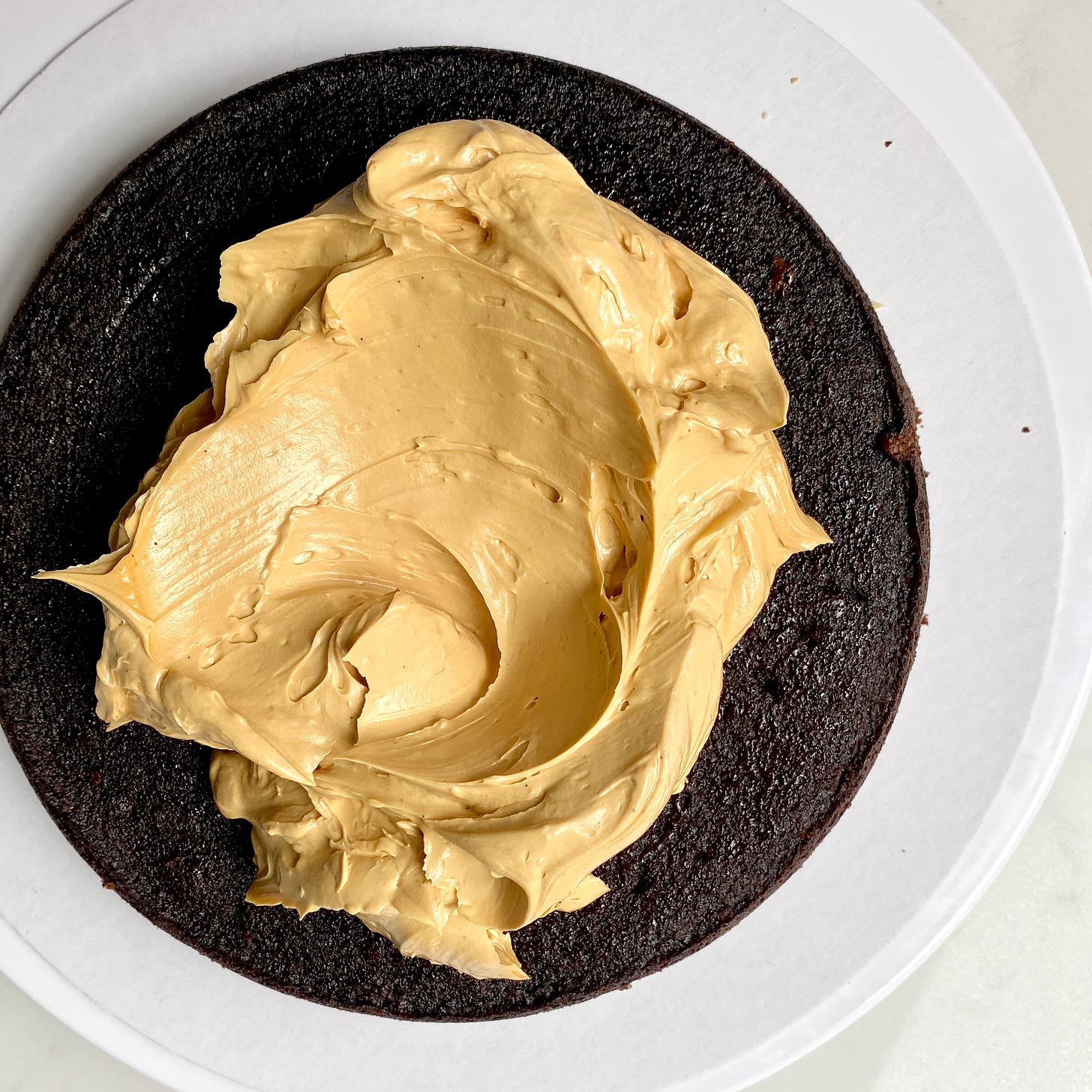
OMG I wish I had found you earlier in life when I had more time to bake. I’ve secretly always wanted to be a cake baker. Eating cakes all day every day is my dream! LOL
But seriously, I bake cookies and breads no problem but as soon as it comes to cake, I run for the box mix and store bought icing. Every single time I’ve tried to make any buttercream it always comes out terrible! 😣
My favorite cake icing (frosting?) is the super light stuff that you find on Korean cakes like from Paris Baguette. They might just be whipped cream. Those are my favorite!
Oh my god you just blew my mind with the elderflower cordial syrup!!! WHY HAVE I NEVER THOUGHT OF THAT??